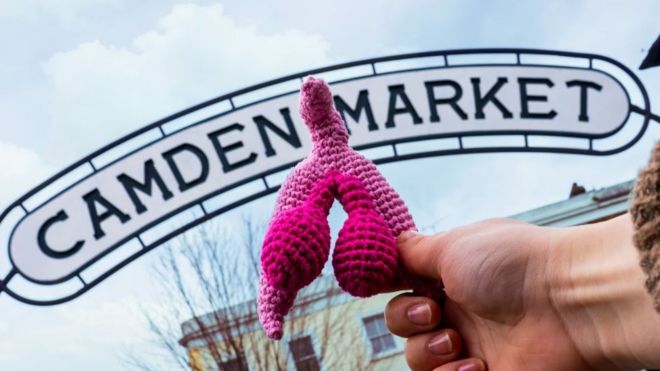In the heart of Camden the Vagina Museum has begun a series of previews prior to its formal opening in November. This is the world’s first ‘bricks and mortar museum dedicated to vaginas, vulvas and the gynaecological anatomy’. It might sound silly and will probably evoke a few giggles here and there, but to my mind this marks a momentous occasion for feminism.
I bobbed along there to a presentation by Emma Rees, a Gender Studies professor at the University of Chester, based on her book The Vagina. The talk, brilliantly titled ‘Vulvanomics’, demonstrates how throughout history, those of us who own one, have been made to feel shame for having a vagina – often stemming from misogyny in the discourse surrounding the female body.
Professor Rees highlighted that the one and only word that fully encompasses the female reproductive system, that once was used in anatomical works as a description for vaginas (although we must note the term “vagina” only refers to the birth canal anatomically speaking), has had its meaning changed.
We’re talking about the dreaded ‘C-word’ which has ventured so far into the realm of taboo that it has stripped vagina owners of the right term to talk about our bodies. So what was once used by doctors to describe the defining element of the biological female body, has become “an ugly word”. Now considered the most dangerous four letters in the English language, it has been replaced with another word that etymologically means “sword sheath”, clearly derived from a misogynistic and heteronormative view of the purpose of female bodies.
Rees says, “labelling women’s bodies as dangerous puts women in danger”, not just from other people, but also from ourselves – and she wasn’t exaggerating. Lysol adverts in the 1940s convinced women they had to rid their vaginas of “cobwebs” by using it to clean themselves out; all in a bid to make themselves more appealing to men. The practice of douching is now seen as ill-advised. However what made this even more dangerous, is that back then Lysol contained mercury chloride – a highly corrosive substance.
In the USA, Lysol is still a product that you can buy. Except it is no longer sold as a ‘douche’; these days it is marketed as a disinfectant for the bathroom or kitchen. Its updated packaging includes a health warning – avoid direct contact with skin due to harmful chemicals. Yet women of the 1940s were told to use it on some of their most delicate parts.
Nowadays women are not called upon to give themselves chemical burns, but ‘feminine hygiene products’ on the shelves are still capitalising on the centuries of shame that women (and other vagina owners) have been made to internalise. Products like FemFresh are still marketed to us to deal with “down there”, despite the fact that our vaginas are extremely complex organs that know how to clean themselves.
The consequences of this shame are far from trivial, as some would have us believe. Talking about vaginas remains so stigmatised it is no wonder issues like FGM (female genital mutilation) are still very much present, with as many as 100,000 girls in England and Wales suffering the after effects.
Even in 2019, after 50 years of screening for cervical cancer, we still need campaigns to encourage women to attend their smear tests, because this is a “lady problem” which we are told is something to be embarrassed about and spoken of only in hushed tones in case the men overhear.
Rees ended her talk saying, “these are serious issues: FGM, rape, sexual assault; and it is a result of women’s bodies being treated with shame”. She even coined a new term, ‘despicion’ to indicate the way in which women have long been objects of derision and suspicion.
With the opening of the Vagina Museum, simply having somewhere that says the word vagina, loud and proud, shows the world that we will no longer be ashamed of our bodies. We will no longer feel ashamed to talk about vaginas. In fact, we can begin to celebrate them.
Photo: Nicole Rixon/Vagina Museum




